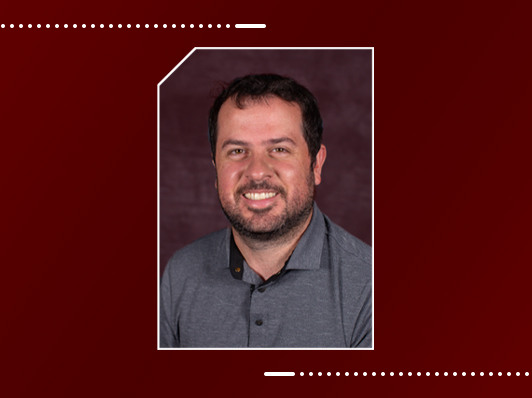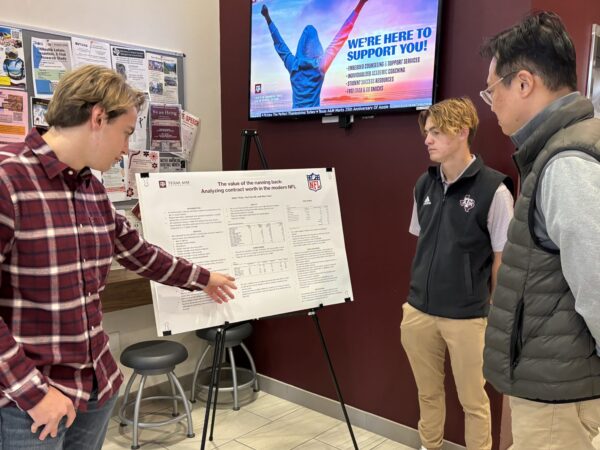Sealing the gap on teacher attrition
When the 2020 school year started, 33,947 teachers left their jobs. The year prior 41,084 teachers had been newly hired.
The losses left just 7,137 new hires to fill a growing gap of teachers leaving classrooms. Teacher attrition rates in Texas have remained at an alarmingly-high average of 9.99%, according to reports by the Texas Education Agency – the national average is 8%.
“Beginning teachers often enter the classroom underprepared and as a result, leave the profession at an alarmingly high rate,” Dr. Andrew Kwok says. “However, effective preparation and appropriate supports can help them to succeed upon arrival or shortly thereafter.”
Kwok is an assistant professor in the Department of Teaching, Learning & Culture in the College of Education and Human Development. He studies teacher preparation and classroom management to give beginning teachers the tools they need to be successful, putting a seal on the gap of teacher loss.
From personal experience
The interest in studying classroom management, teacher prep and ways to reduce teacher attrition came from his time as a California educator. He saw his colleagues leave their careers out of frustration or unpreparedness – with students bearing the greatest brunt of the losses.
“Classroom management is a vital pedagogical skill that helps teachers to organize and structure the classroom towards success,” Kwok says. “Also learning more about pre-service teachers, in particular, can help teacher educators better prepare them prior to entering the classroom.”
One of Kwok’s recent works is a framework detailing how to incorporate classroom management into teacher preparation courses.
The Classroom Management Preparation framework emphasizes teaching about how to adjust classroom structures to students’ culture, background experiences, and individual needs, among other things.
“Preparing and supporting teachers in culturally responsive classroom management matters to teacher and student success,” Kwok says.
Creating support leads to longer lasting teachers
Kwok says when teachers enter their first year, schools will sometimes provide a lump-sum of materials for beginning teachers in hopes of helping them navigate their new career – but this can lead to information overload.
He says a more efficient way of supporting beginning teachers is providing individualized induction support, easily accomplished through coaching.
“Rather, give them frequent, sustained and individualized support,” Kwok says. “Invest in them so that they will invest back into the district.”
Induction coaching is a type of mentorship where a beginning teacher is paired with a coach, often a veteran teacher, to learn about classroom management and other professional practices.
In his research, he notes that although induction services are being implemented in districts across the U.S., they vary in quality and level of support for new teachers. For example, he says beginning teachers in professional development programs may hear repetitive, or even contradicting information which creates issues and confusion.
His research suggests certain things that should be considered for the program to be effective:
- There should be a quality match between coaches and new teachers based on characteristics such as teaching styles and philosophies, followed by grade level and subject-matter.
- For coaching to be effective, a minimum amount of time for coaches and beginning teachers to meet and interact should be established to better enhance skill building.
- District administrators, teacher educators and induction program personnel should make sure all induction curriculum and programs align to build upon one another to be successful.
“When we can identify how to better equip teachers, either in their teacher preparation program or through induction programs, we can use that to develop necessary supports. Better teachers often mean longer lasting teachers,” Kwok says.
From here on out
Kwok says to continuously learn about beginning teachers creates stronger teacher preparation programs and professional development in districts to retain a strong teacher workforce.
“One overarching goal is to find out how to get beginning teachers to go to the classrooms that need them the most,” Kwok says. “So learning about mechanisms towards this end and eventually finding ways to nudge them in those directions.”
He says this will help districts improve their own operations and for teachers to find districts where they feel they will be supported and successful, and in turn stay longer.
About the Writer
Justin is a native of Harlingen, the capital city of the Rio Grande Valley in Deep South Texas. He graduated in 2021 from The University of Texas Rio Grande Valley with a Bachelor of Liberal Arts, majoring in Mass Communication with a concentration in Print Journalism. Justin is responsible for writing news and feature stories for the College and its various departments to be featured via the web, social media, and various other media outlets.
Articles by JustinFor media inquiries, contact Justin Elizalde.













